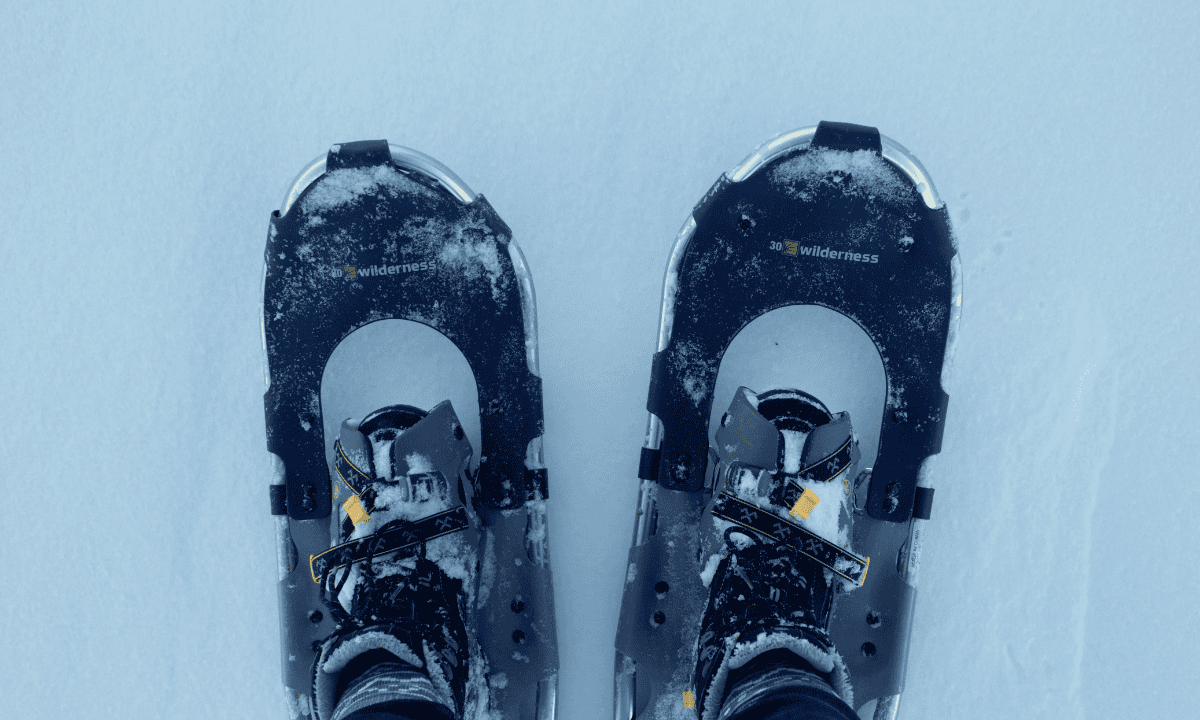Boots are the most important part of your kit. I didn’t realize it, but for years I was wearing snowboard boots that didn’t quite fit correctly. I was young, poor, and went off the recommendation of whichever clerk was helping me at the lodge. And honestly, I didn’t care. I figured the problems I had on the mountain were because of my limited skill and not because of the control I didn’t have as a result of poorly fitted boots.
It wasn’t until I was much older with disposable income that I realized I was able to pick and choose my boots, not just go with whatever options were the cheapest. Turns out, those clerks who work at the lodge don’t always know how snowboard boots should fit. In fact, many of them have never snowboarded a day in their life (I know, I asked).
Table of Contents
How Should Snowboard Boots Fit?
Top things to know when trying on snowboard boots:
- Most companies make sizes that are the same as your normal shoe size
- You want a snug fit
- If your toes touch, that’s fine (you probably want it that way)
- Bend your knees when trying on to get an accurate fit
- Pick the lacing that holds down your heel
Here are the basic things you need to know about how snowboard boots should fit:
#1: Companies are True to Size
Today, when you look at a label online or on a box, companies will list the size, like 9 or 10.5 or 11. These sizes are typically true to size, meaning that whatever size shoe you normally wear will likely be the same size you wear in a snowboard boot.
If all your shoes are men’s size 10.5 or women’s size 8, those are probably the same sizes you wear in snowboard boots. Not always, but often. So it’s a good place to start when sizing new boots.
Why does this matter? Because snugness matters.
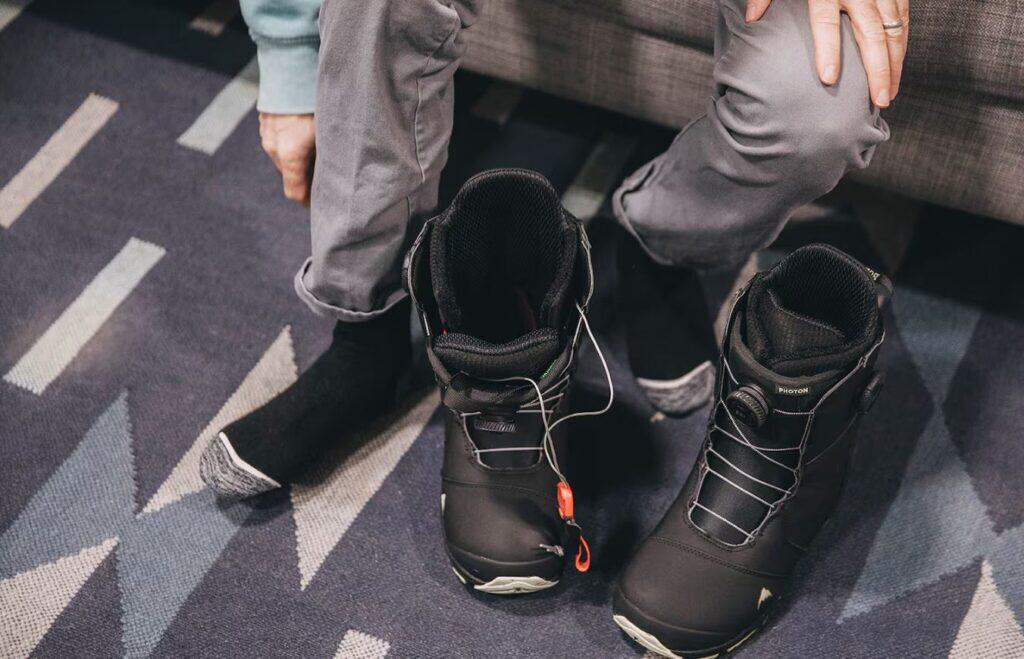
#2: Snugness Matters
When you try on a snowboard boot, you’ll probably focus first on how snug it is from your heel to your toe. A lot of people make the mistake of trying something on, feeling their toes against the front edge of the boot, and assuming the entire boot is now too small.
So what do they do?
They go up a size.
This can be a problem, though, because structurally, when you go up a size with a snowboard boot, it doesn’t just extend the length from heel to toe. It extends all of it, meaning everything else from your heel to the top of your ankle and from the top of your calf down to your heel gets bigger, wider, and this can be a problem.
I was born and raised on the West Coast, where flip-flops were worn year-round. Now, when I put my shoe in a flip-flop, and I lift my foot, I can use my toes and the front muscles of my foot to curl down and hold the flip-flop against my foot, keeping the back part attached to my heel, even though there isn’t any other method of security back there.
This silly visual is important because those are the same muscles that you use when controlling your board. Now, when I’m wearing flip-flops, that’s a super easy process because I don’t have any extra weight hanging off my foot, but when I’m snowboarding, I do. And so do you.
When you are snowboarding, though, in a toe-side carve, you are now using those same muscles to counteract the weight of:
- Your board
- Your boots
- Your bindings
You also have gravity and leverage on that outside edge, trying to pull you back to the snow.
So if you go up a size because you don’t like your toes brushing the front edge of that boot, you might end up with too much room, especially between your heel and the top of your ankle, and that can make it really hard to use those muscles in your toes in the front of your foot to carve. It also means your foot is gonna get pulled out of your boot.
Tip: If you regularly get cramps in your calves when you board and your toes are killing you at the end of the day, your boots are probably too big (or too old).
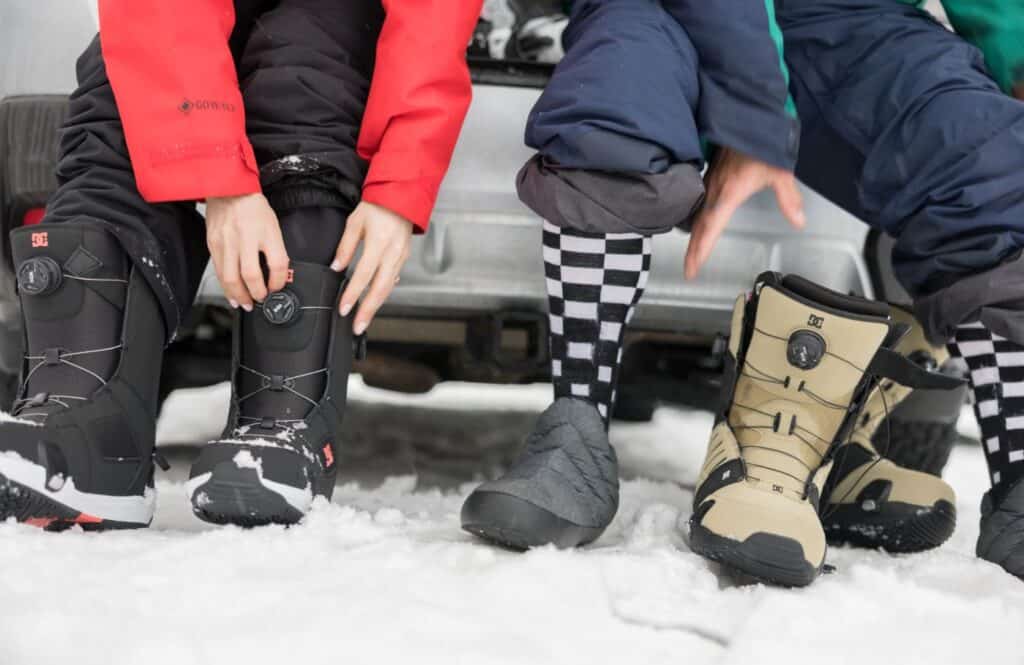
#3: Feel the Front
Tangentially, when you try something on, it’s not the end of the world if your toes can feel the front of the boot. In fact, that’s probably a good thing.
If you are trying on a pair of boots, put your foot in them, lace them up, and see how they feel. If your toes are touching the front, this is actually just fine. The only thing you don’t want is for your toes to be crimped or bent because this does indicate the pair of boots is too small.
But again, your toes just grazing the front of the boot is actually fine as most new snowboard boots come with a heat moldable liner so as you wear the boots a handful of times, the liner and the boot will break in, stretch, and end up giving you more room so if everything else fits fine but your toes are touching the front, rest assured that your boot will break in really early in the season if you are hitting the slopes regularly.
Note: A brand new pair of boots are the tightest they will ever be. Just a few days of wearing them will break them in so that they are not as tight.
#4: Bend Your Knees
Another mistake people make when trying on snowboard boots is standing upright. Snowboard boots are actually built with a slight forward lean. If you look at them, you’ll see that the back part is angled or pitched forward to help you, as this is the typical stance you will assume when boarding, so it actually helps reduce fatigue.
So, when you stand in your snowboard boots trying to decide if they fit or not, bend your knees.
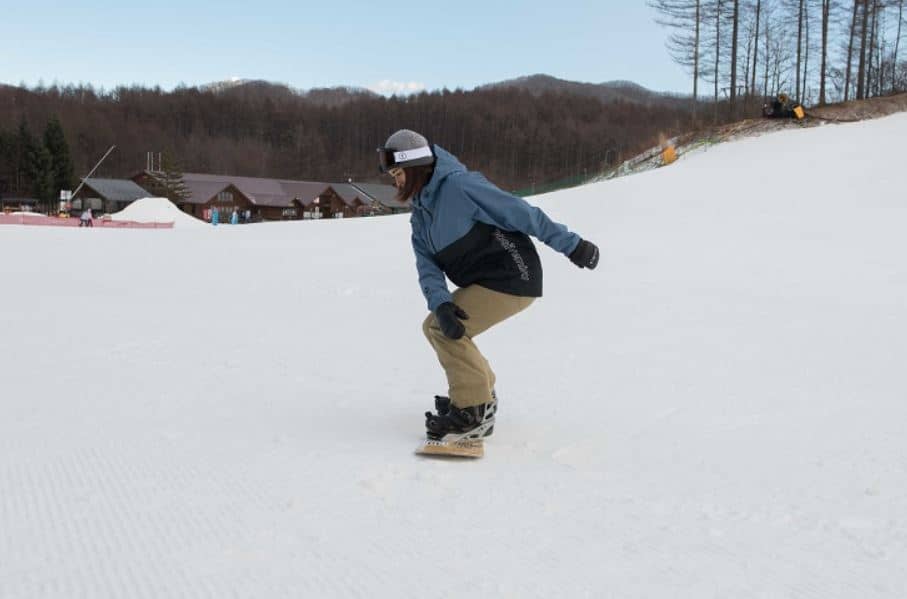
If you stand upright, it actually places pressure on the back of the snowboard boot, which pushes the front of your foot forward. This means you are more likely to feel as though your toes are crimped or don’t have enough space at the front of the boot, even if everything else is comfortable, simply because of the way you are standing.
If you are trying on boots at home or at a store, lace everything up and then bend your knees as though you were boarding. Bent knees are how you will stand most of the time while boarding, and this will help you figure out whether your foot position is a good match, basically, whether your toes are crimping too much or not.
- If you have room to wiggle your toes, you are good.
- If your toes are touching, bent, and uncomfortable, you might need a bigger size.
- If you have too much pressure on the sides of your toes, you might need a wider boot size.
#5: Hold the Heel
Then we come to the heel. Lots of lacing out there, but either way, your boot should securely hold your heel in place. Again, you don’t want that heel lifting and forcing you to waste your energy holding it in place. Let the lacing do that for you.
My entire family uses standard laces. Why? We all have weird feet (lots of narrow and wide feet over here), and standard laces have the center lacing zone, that area of lacing that isn’t attached to the lower or upper laces. I like this because it lets me control the exact tightness going up the boot, with a tighter cinch right at the top of the ankle holding my heel in place, but a looser fit around the top of my (wide) foot.
This part comes down to personal preference, though.
Picking Snowboard Boots
When you are ready to start picking a new pair of boots, I would recommend that you look at your budget. Remember that if your feet aren’t comfortable, you won’t want to be riding, and that just means you waste a lift ticket.
So, look at your budget and figure out what you are able and willing to spend on new equipment. This might be starting from scratch and buying a new board, bindings, and boots, or it might just be buying new boots and a jacket.
Whatever you are looking to buy this season, I strongly urge you to spend the majority of your budget on good boots. Everything else can be purchased at a discount, used, or even from a thrift shop, but picking the right boots is one of the most important investments.
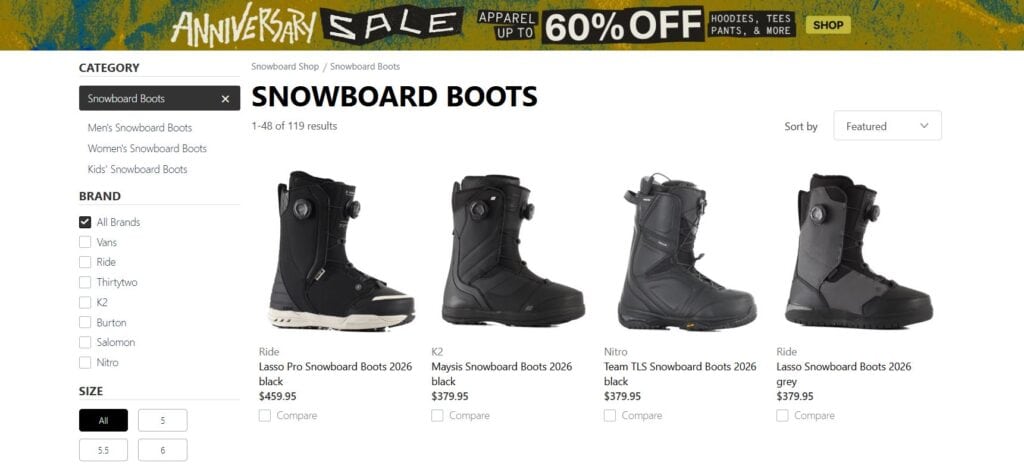
With my budget in mind, I like to try on different boots in person and then go online to find those same brands at a discount. If you can wait for seasonal discounts, places like Tactics have good deals and free shipping on name-brand snowboard boots that can make all the difference in how you feel throughout the season.
Summing Up
The biggest mistake I see time and time again is people trying on boots and saying they are too small or too snug because they stand upright while wearing them or they think that their toes touching the front is the same as bent or crimped. So they go up a size and end up with cramps and a bad vacation.
So my takeaway for how should snowboard boots fit is as follows:
- They should fit mostly the same as your regular shoe size
- They should fit snugly
- Your toes should touch especially in brand new boots
- You should bend your knees to make sure you get an accurate fit
- Your heel should be secure in the boots, so you have more control
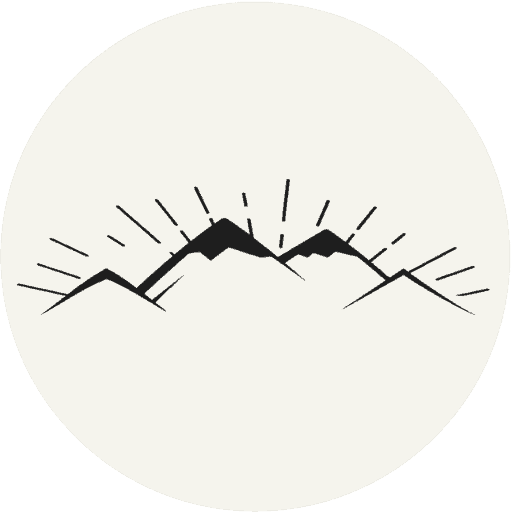
The All-Outdoors Guide team is comprised of enthusiastic experts that enjoy helping others that aspire to be better at outdoor fun. Part of that is making sure you have the right gear and information when it’s time to go out and have fun. Some of our team have accomplished amazing feats like climbing 6000 feet to the top of mountains, others have explored every dirt trail they could find and we even have some people that have backpacked solo on various continents. No matter what our readers want to learn and do, our team is here to help them accomplish those goals.

